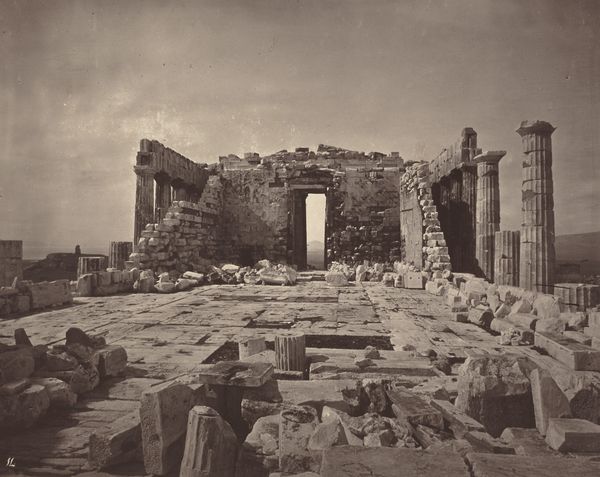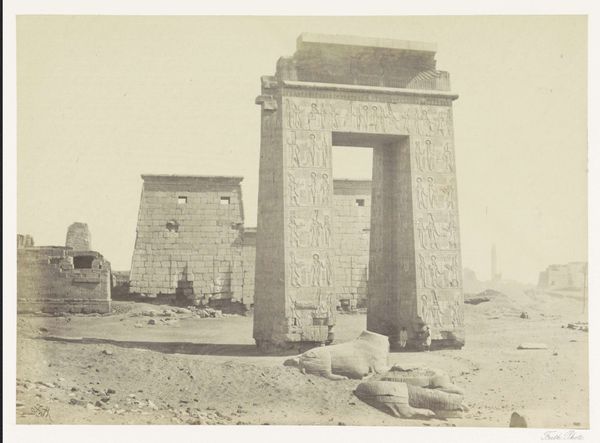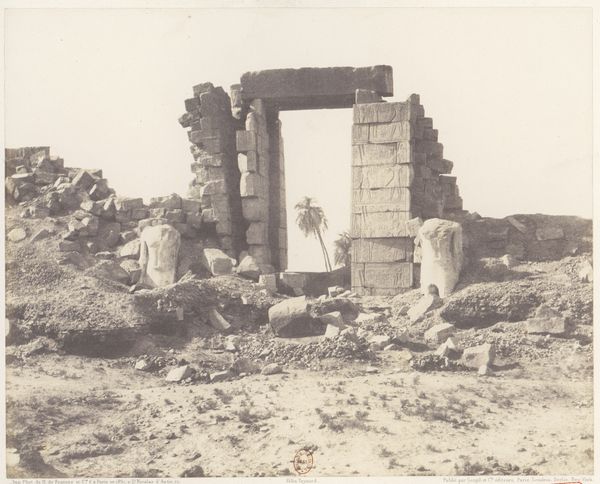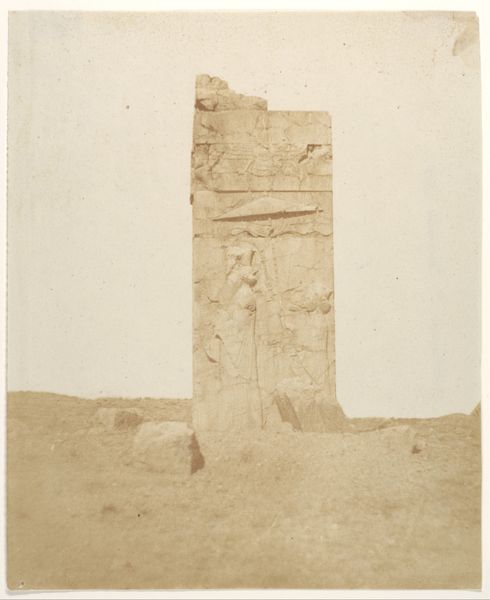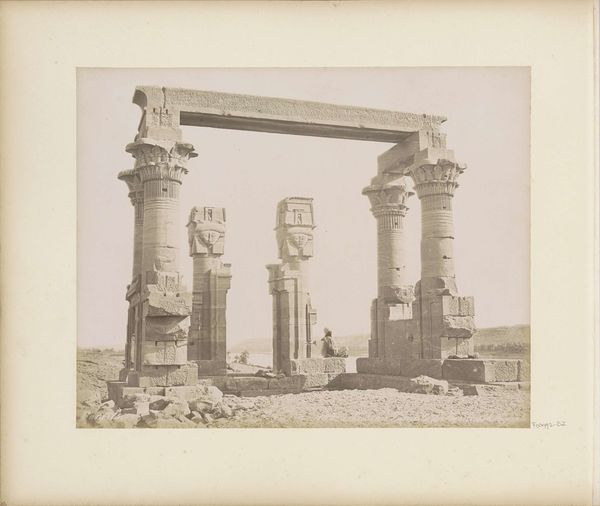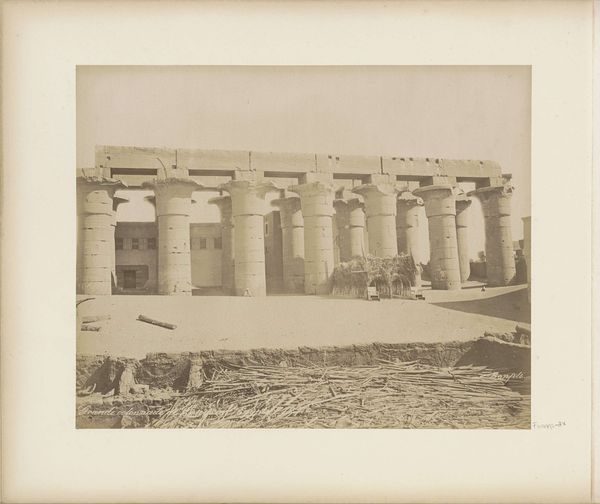
Temple of Horus, Edfu (167. ? Temple.) 1844
0:00
0:00
daguerreotype, photography, architecture
#
landscape
#
daguerreotype
#
ancient-egyptian-art
#
photography
#
ancient-mediterranean
#
architecture
Dimensions: Image: 3 11/16 × 4 3/4 in. (9.3 × 12 cm)
Copyright: Public Domain
Curator: Here we have Joseph-Philibert Girault de Prangey’s daguerreotype, "Temple of Horus, Edfu," taken in 1844. A remarkably early photograph, wouldn't you agree? Editor: The light is astonishing, almost ethereal. The structure seems to rise from the dust, a monument haunted by its own history. There’s such a stark, solitary feel to this image. Curator: It's more than just a record of a place, of course. It embodies the very process of its making. Consider the exposure time needed for a daguerreotype— the physical stillness demanded by the medium, the alchemy of the silver plate meeting light… that temporal dimension shapes our experience. Editor: And the image itself – the gateway motif. Symbolically, a passage. But to where, or from what? Temples have always been about journeys, both physical and spiritual, and this photograph captures that enduring human impulse toward something… beyond. What do you suppose it meant to the people of that time? Curator: Well, the means of its production held immense cultural weight at the time. This was new technology meeting ancient craft. To capture something so monumental with such precision speaks to the increasing European fascination with documenting antiquity—and, perhaps, also claiming a piece of it. Consider who had the means to commission and then disseminate such images… Editor: Precisely! Photography offering this unprecedented “realistic” means of circulating knowledge, right? In this very composition, the ruined architecture is as much an element as the very solid earth itself. Consider its use as an icon, and all the symbolic language of rebirth and renewal that the Horus myth entails. Curator: The creation of such imagery also hinged on specific economic and social forces allowing access to these sites in the first place, bringing photography to bear on the processes of recording and displaying heritage… How were these pictures viewed then and now, consumed across various audiences? Editor: You know, it speaks to how layered symbols work across different contexts. Whether you consider it as cultural appropriation or the simple enduring appeal of iconic imagery, they speak. Curator: I find I keep considering the human labor involved in erecting those original stones and, again, the labour that allows to making, presenting and viewing the picture too. Thank you for allowing us a deeper understanding of the temple and what this monument represented. Editor: Thank you. I see enduring human narratives about time and faith etched into this fragile surface.
Comments
No comments
Be the first to comment and join the conversation on the ultimate creative platform.
